Eye candy: Jaime Hayon gives Caesarstone’s engineered quartz a new spin
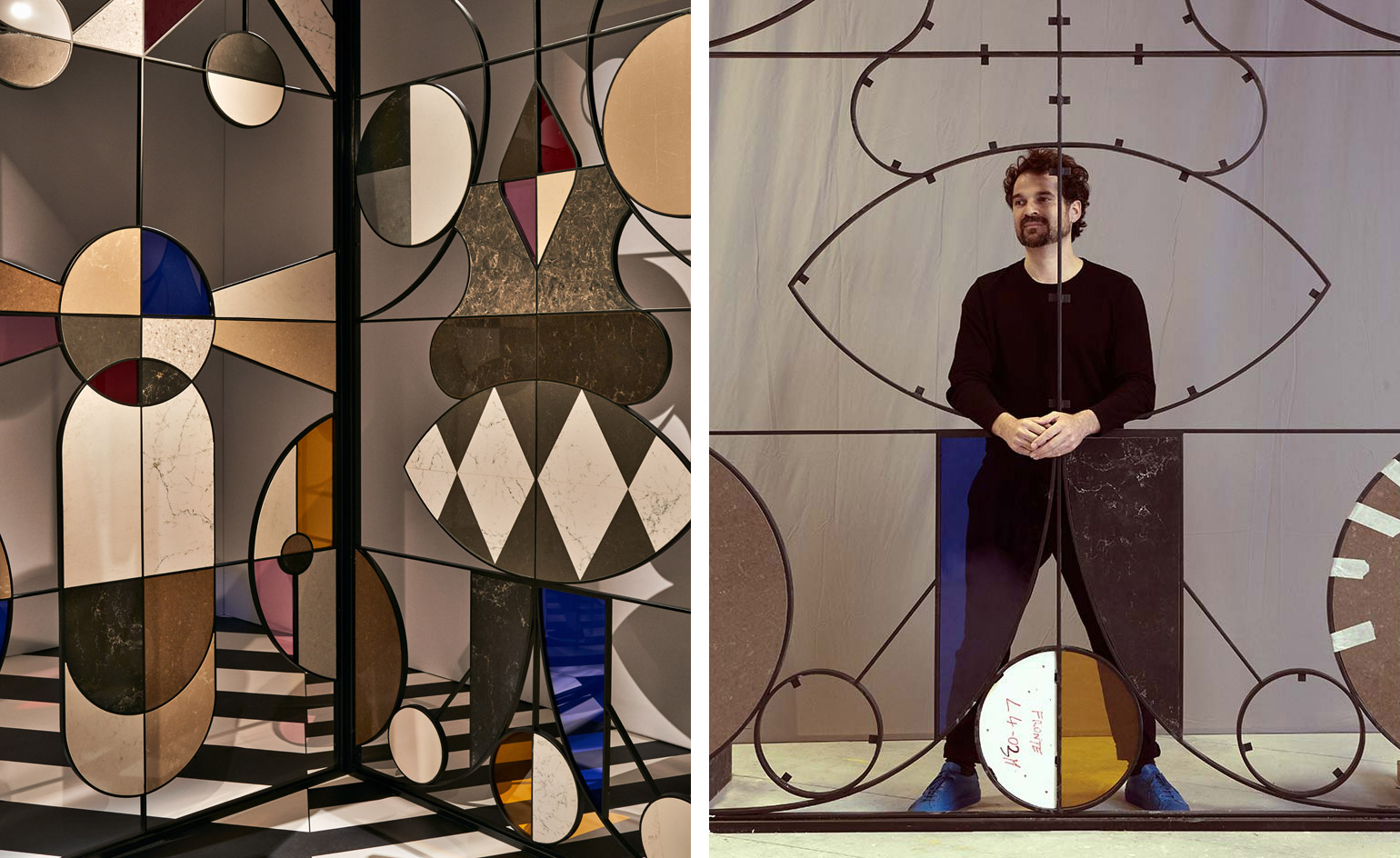
Salone del Mobile is a circus and Jaime Hayon would like you to roll up, roll up to Palazzo Serbelloni, where his glossy black merry-go-round for Caesarstone will be spinning like a life-sized kaleidoscope inside a pavilion of stained glass and quartz. Anyone with the stomach for it is welcome to hop aboard.
‘Stone Age Folk’ is the latest in a series of spectacles produced by Caesarstone, the maker of high-grade engineered quartz and a perennial design-week ringleader. Hayon, the Valencia-based designer beloved for his fantastical ceramics and sinuous furniture, proved a natural collaborator for the brand.
At furniture fairs like Milan, the ‘fair’ element is often glaringly absent. Yet Palazzo Serbelloni – a setting for lavish parties long before Napoleon and Josephine squatted there in the late 18th century – aims to please. The centrepiece of Hayon’s multi-room show, the carousel sits in the palazzo’s ballroom surrounded by Corinthian pillars, gilt mirrors and elaborate cornicing. Graphic geometric panels set into the steel-frame walls have Hayon’s typical exuberance, but with a vivid exoticism reminiscent of ancient carvings and tribal ornamentation. This flourish stems from Hayon’s obsession with anthropological artefacts. In this case, his study of Hungarian costumes, Japanese legends and his own Spanish heritage coloured his thinking.
‘I always get inspiration by looking at the spirit of different cultures,’ he says. As someone who approaches design with almost wide-eyed innocence, he found a common language with the subject matter and distilled it down to a simple pattern of motifs. ‘There’s something very primitive about folklore,’ he adds. ‘If you look at Bavarian dresses or Dutch embroidery, [the look] is always very basic – almost as if it was done for kids.’
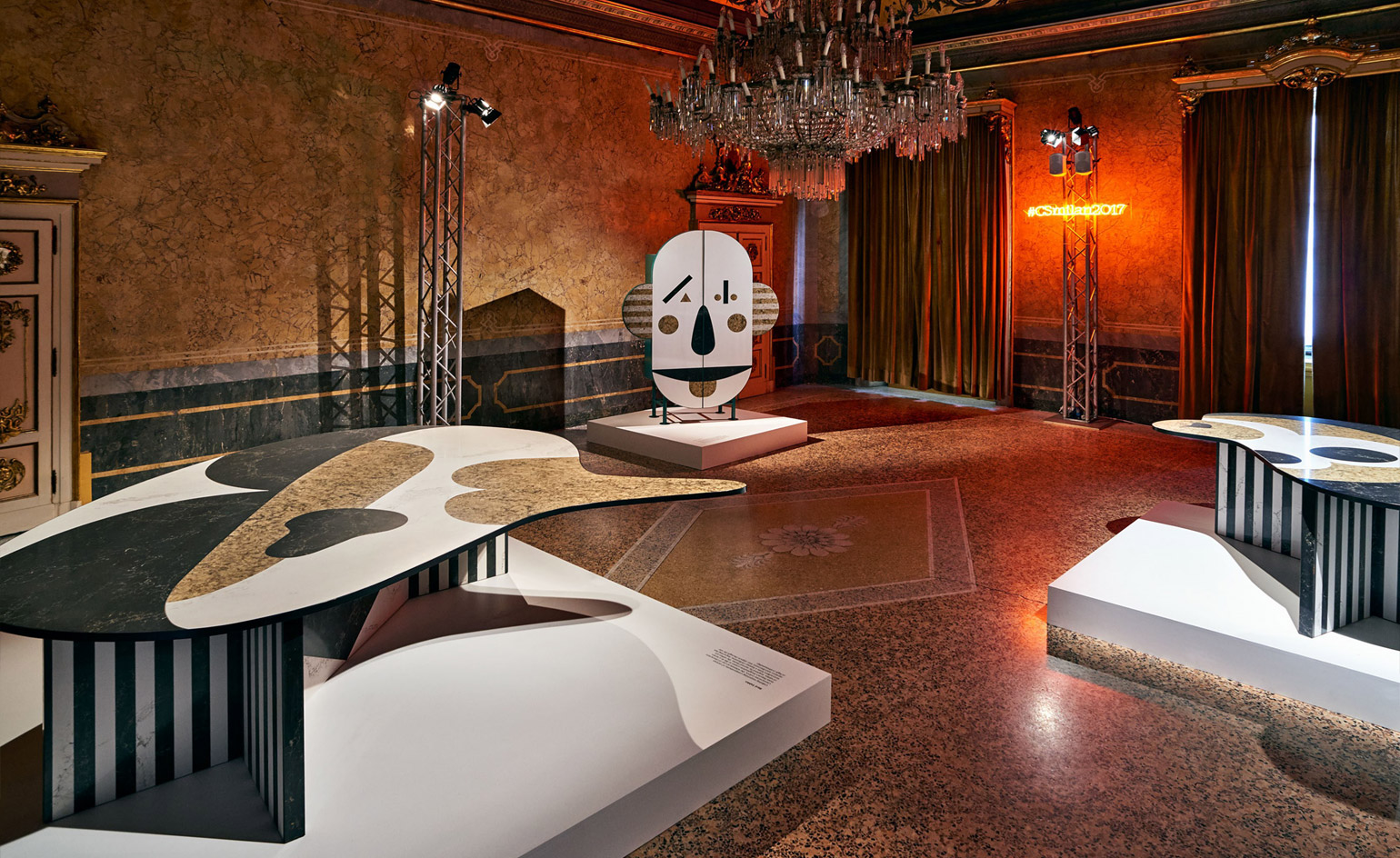
Pieces from Hayon’s recently launched home furnishings collection for Caesarstone.
For Hayon, the launch of the carousel is the culmination of a two-year investigation into themes of flora, fauna and folklore in ancient civilisations. In 2015, Caesarstone provided funding for a commission from the Design Museum Holon in Israel, for which Hayon designed a giant mirror in the shape of a tribal mask. Experimenting with traditional and contemporary marquetry, he gave the mask a monkey-like quality with wide eyes, a jagged mouth and lolling tongue, alternating mirror inlay with engineered quartz.
‘What we liked was the way he approached Caesarstone [as a material] and brought to life the combination of colours in a unique way,’ says Eli Feiglin, vice president of marketing at Caesarstone, who worked with Hayon on the project. ‘We also liked his idea of combining it with other materials.’ ‘Face Mirror’ is now in the permanent collection at Holon. With Toronto’s 2017 Interior Design Show (IDS) on the horizon, Caesarstone went on to commission Hayon to create an entire range of furnishings and wall panels. This time, Hayon delivered the same marquetry, but the pinched noses and bands of ‘war paint’ signified a more playful interpretation of cultural motifs. The seven pieces that debuted in January at IDS – including a ‘face cabinet’ and ‘bird table’ – helped push the Caesarstone product into an area of home furnishings previously dominated by marble and granite (the quartz composite, bound by polymer resin, is actually stronger and more flexible than either).
Every second year, the Caesarstone crew hits Milan with a new kitchen design by a veteran such as Tom Dixon or an up-and-comer such as the duo Raw-Edges. But in alternate years, they give designers a free pass to play with their material. This is one of those years and is what Caesarstone’s new CEO, Raanan Zilberman, hopes to see more of in the fair programme in future. ‘We already see that materials are inspiring and stimulating artists, architects and designers to create in domains that are far beyond the classical applications,’ he says. ‘We look forward to seeing designers from all over the world break the traditional relationship with our materials and enter areas that we have never tried before – in particular in domestic usage for furniture and accessories.’
Using ‘Face Mirror’ and the subsequent furniture collection as thematic bookends, Feiglin asked Hayon to ‘freestyle’ for Salone. The idea, he says, was to juxtapose the Caesarstone with even more complex materials and to frame the composite stone as one would a precious jewel. ‘We wanted to look at it as a gem, highlighting the accuracy with which you cut it and set it,’ says Feiglin.
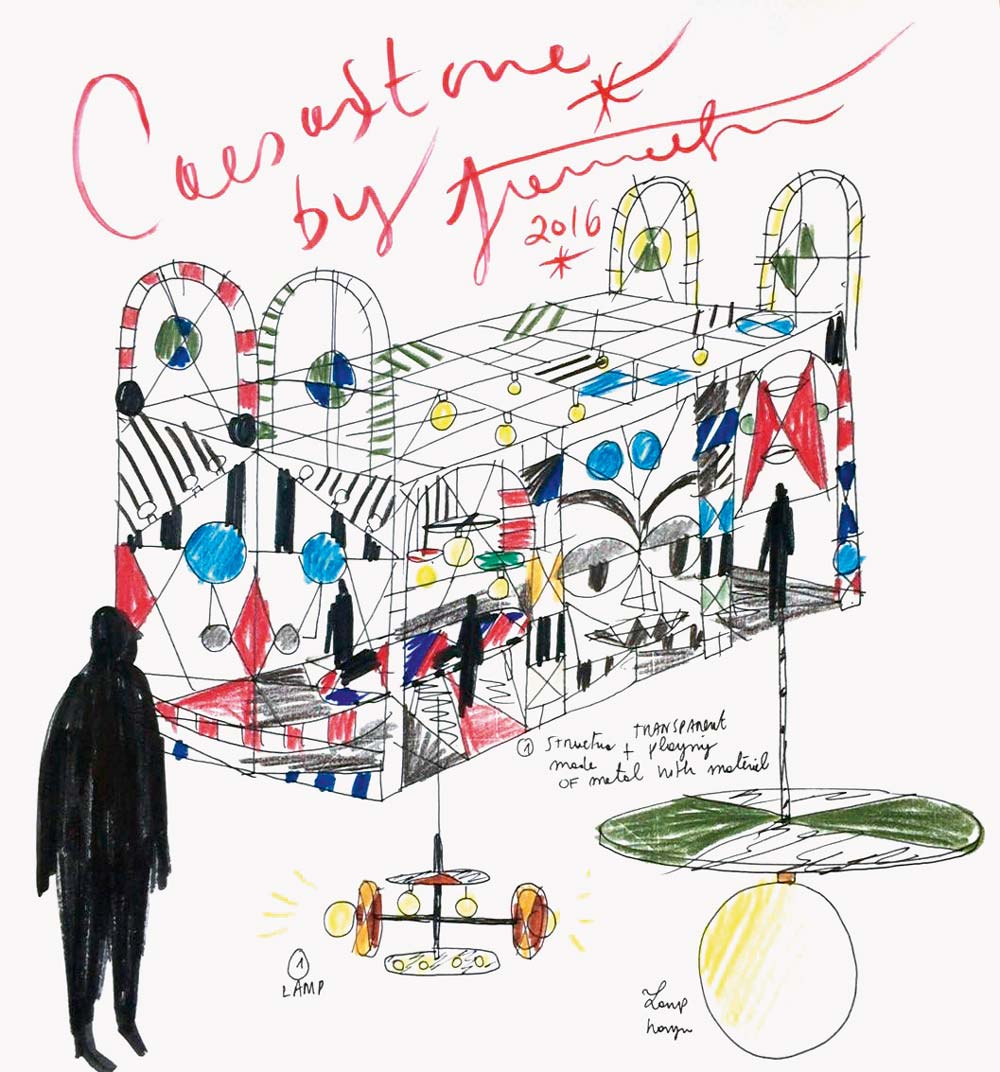
Hayon’s sketch
Not only was Hayon operating outside the kitchen context, he was operating outside his own. ‘To be honest, I was never really interested in this material before,’ he says. Hayon runs through the variety of media he’s been blessed to work with. Oak for Fritz Hansen. Crystal for Baccarat. Carrara marble for Galerie Kreo. Twenty-four carat gold for Bosa. ‘I’ve always promoted materials that go into museums, in which there’s a sense of nature and a sort of proof with time,’ he says. ‘I’m passionate about working with simple, high-end materials, things that were used in Rome.’ Caesarstone wasn’t on his radar, but he came around. ‘At the end of the day, I’m contributing to the history of a certain material, whether it’s crystal or porcelain. Lately I’ve been exploring leather, copper and marble,’ he says. ‘What I’ve realised is that this is a sort of 21st-century marble.’
Hayon set a goal to take Caesarstone out of its functional niche and apply it in an artier milieu. He asked, ‘What would the decorative artists of the Villa Borghese in Rome have done if they’d had Caesarstone instead of marble for their marquetry?’ Probably used a high-definition laser-cutting machine, he concluded.
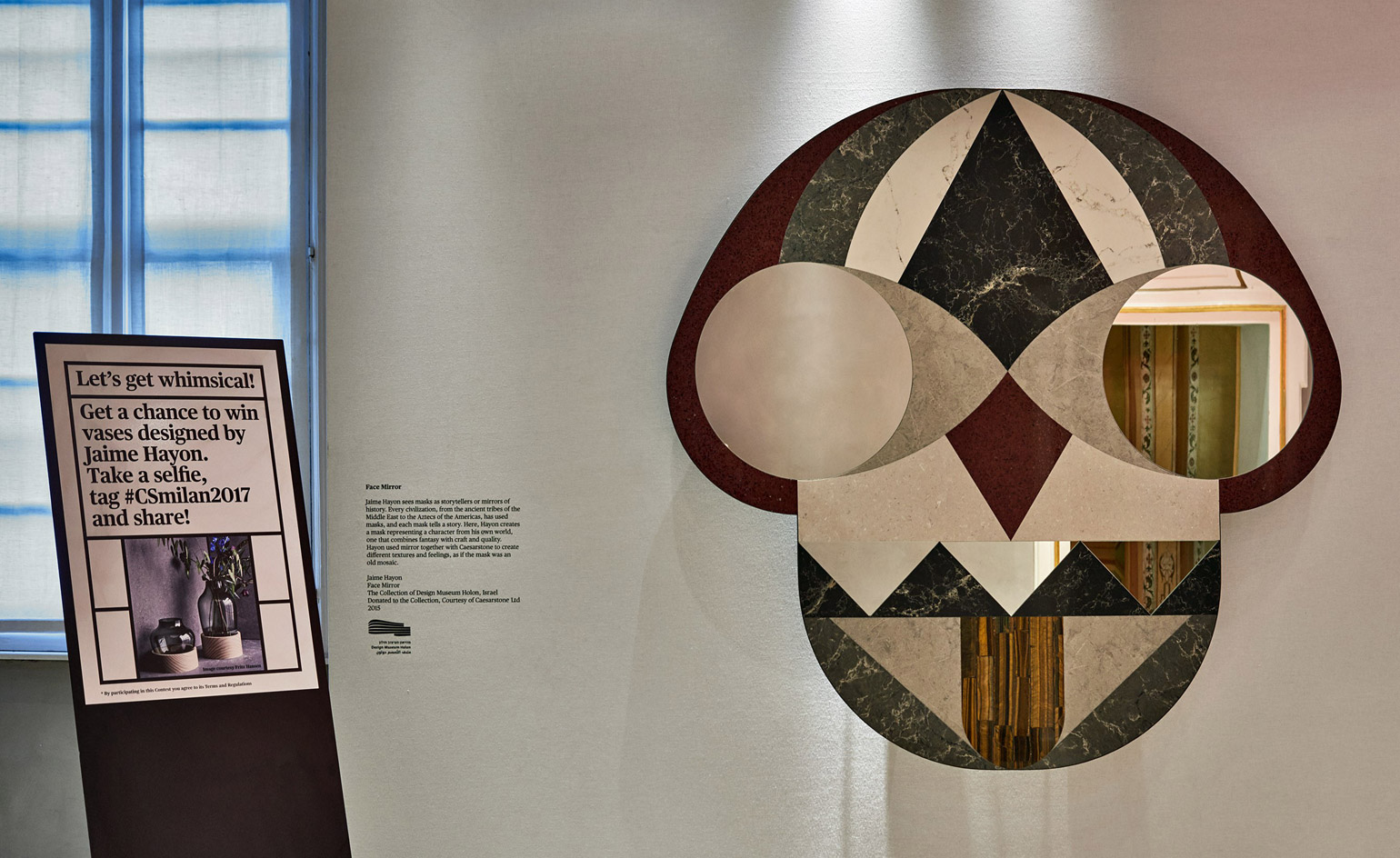
‘Face Mirror’, part of Design Museum Holon’s permanent collection.
Beginning with an extensive palette of colours and textures, he reined himself in, opting for the most ‘banal’ slabs in tones of sand and grey. Using the most popular neutrals in the collection would create subtle contrasts and ‘prove you can do something spectacular, graphic and artistic with the simplest of all elements’. Introducing panes of coloured glass would satisfy Feiglin’s wish to pair unlikely surfaces together.
And what a lot of surface it is. Even the Villa Borghese has never seen so much marquetry as Hayon has installed in the ballroom (ten tonnes of it). ‘Making this happen, exactly how we wanted it, was hard core,’ he says. And that’s the point. In scaling up gradually from the ‘Face Mirror’ to the ‘Face Cabinet’ to this pavilion, he has built an argument for using the stone in an architectural way.
The carousel is a means of experiencing the stone at a grand scale, brushing against the lustrous finish, contemplating it at ceiling height. ‘Instead of being just a floor in your bathroom, it brings you into another dimension,’ says Hayon. ‘This is what I want to show people – how they can get into a totally new world by applying the material.
As originally featured in the May 2017 issue of Wallpaper* (W*218)
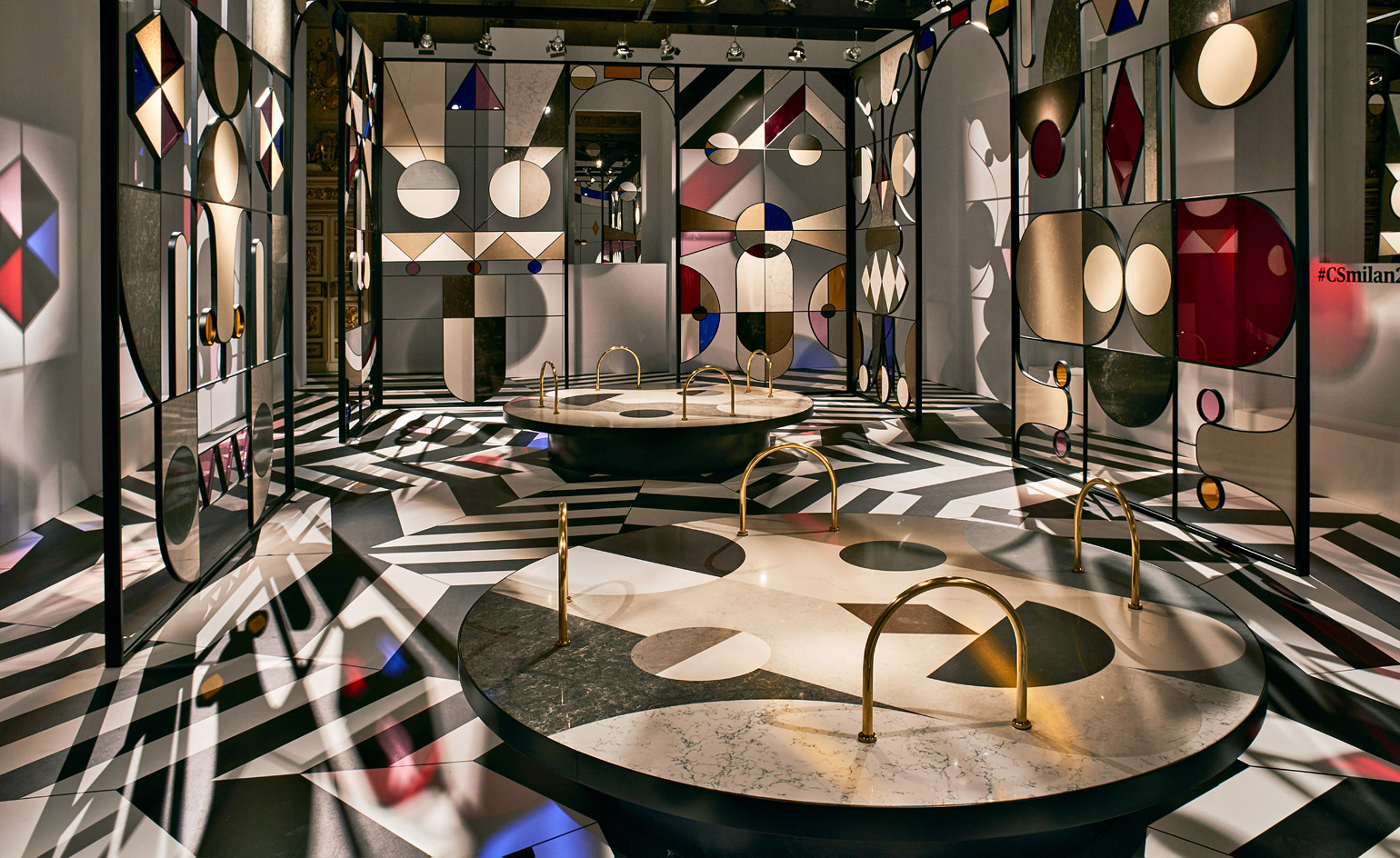
Presented at Palazzo Serbelloni, ‘Stone Age Folk’ is a the latest in a series of spectacles produced by Caesarstone. The centrepiece of the multi-room show is the carousel that sits in the palazzo’s ballroom.
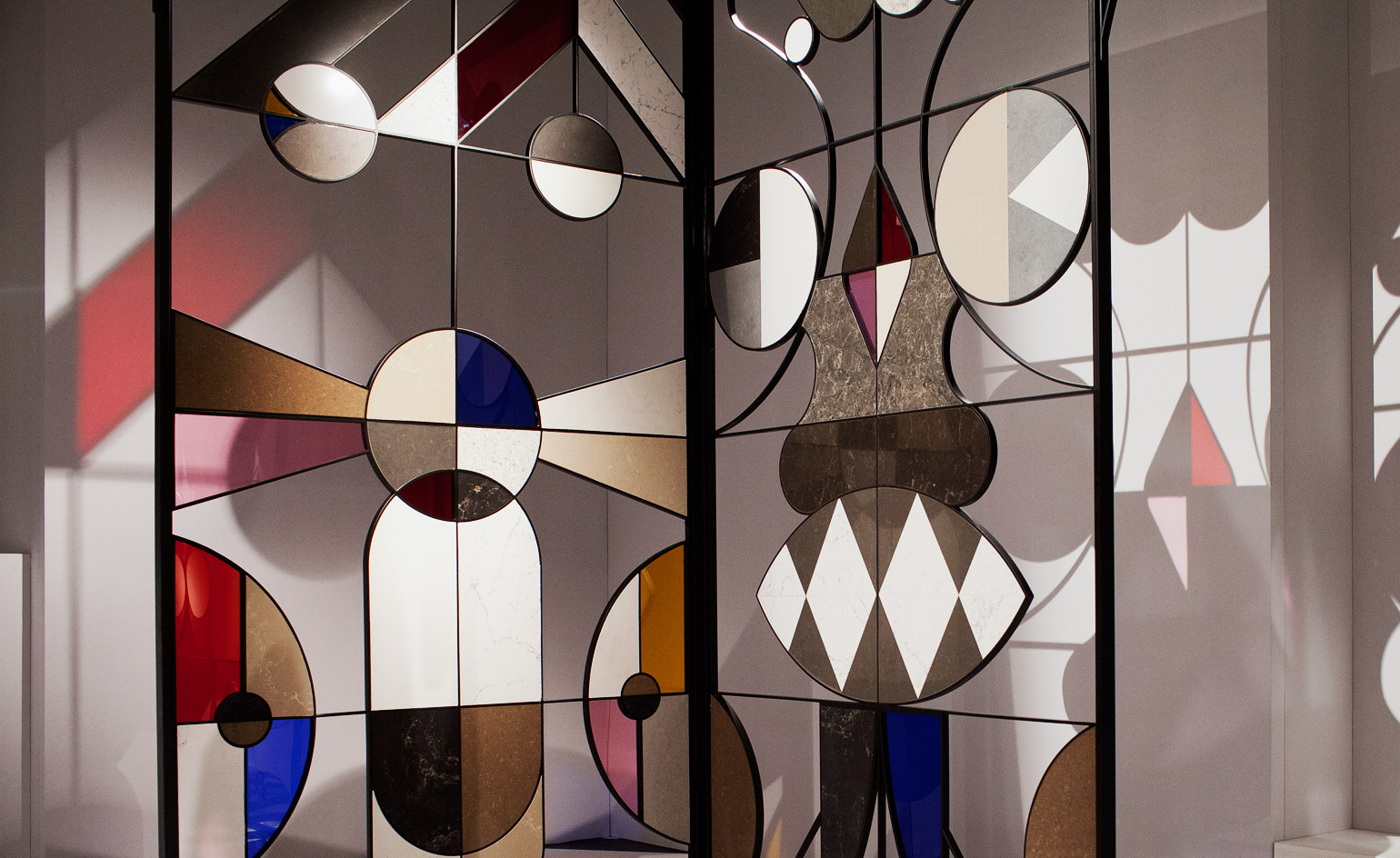
Graphic geometric panels set into the steel-frame walls have Hayon’s typical exuberance, but with a vivid exoticism reminiscent of ancient carvings and tribal ornamentation.
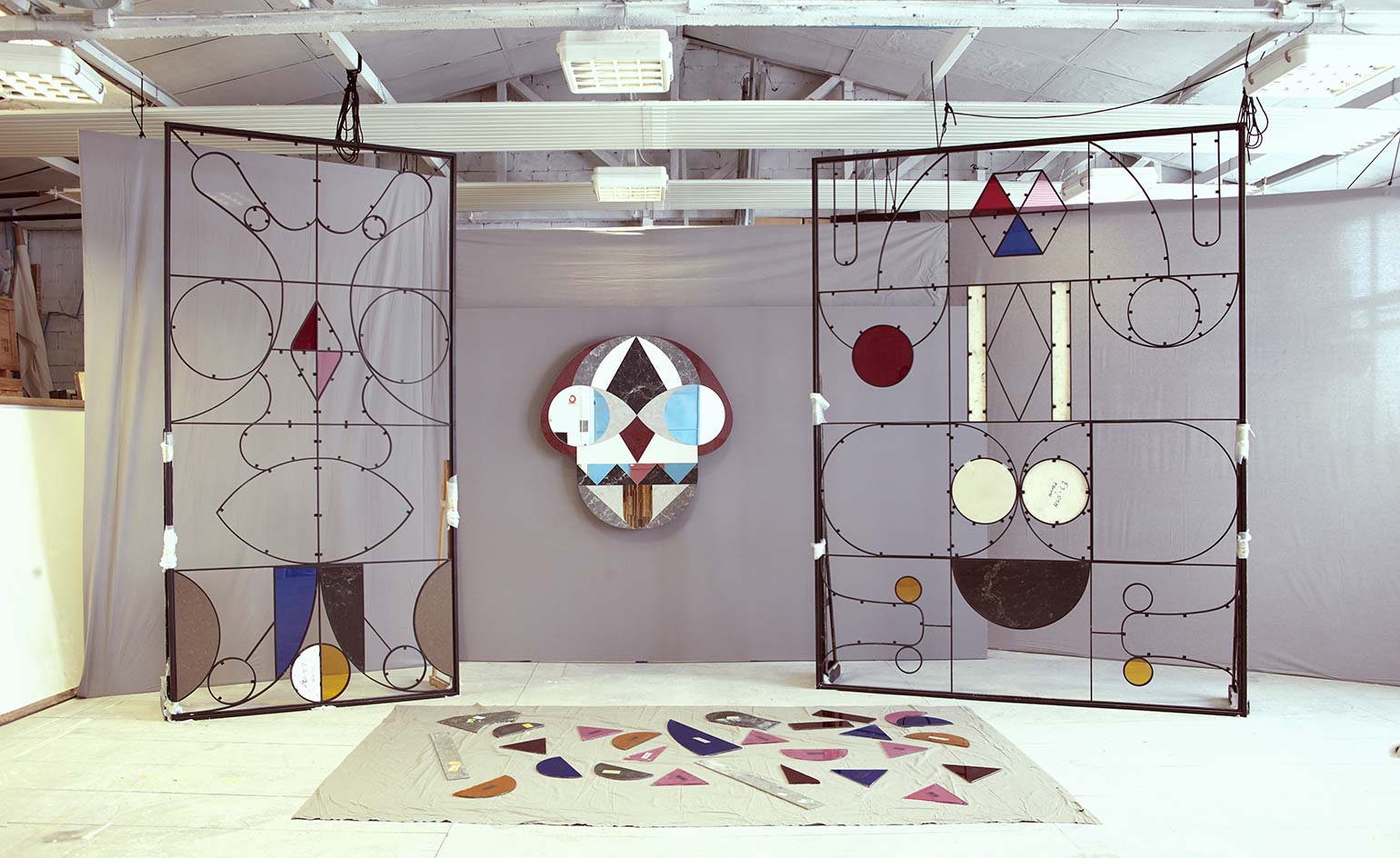
Stained glass pieces at a workshop outside for Milan, ready for placing.
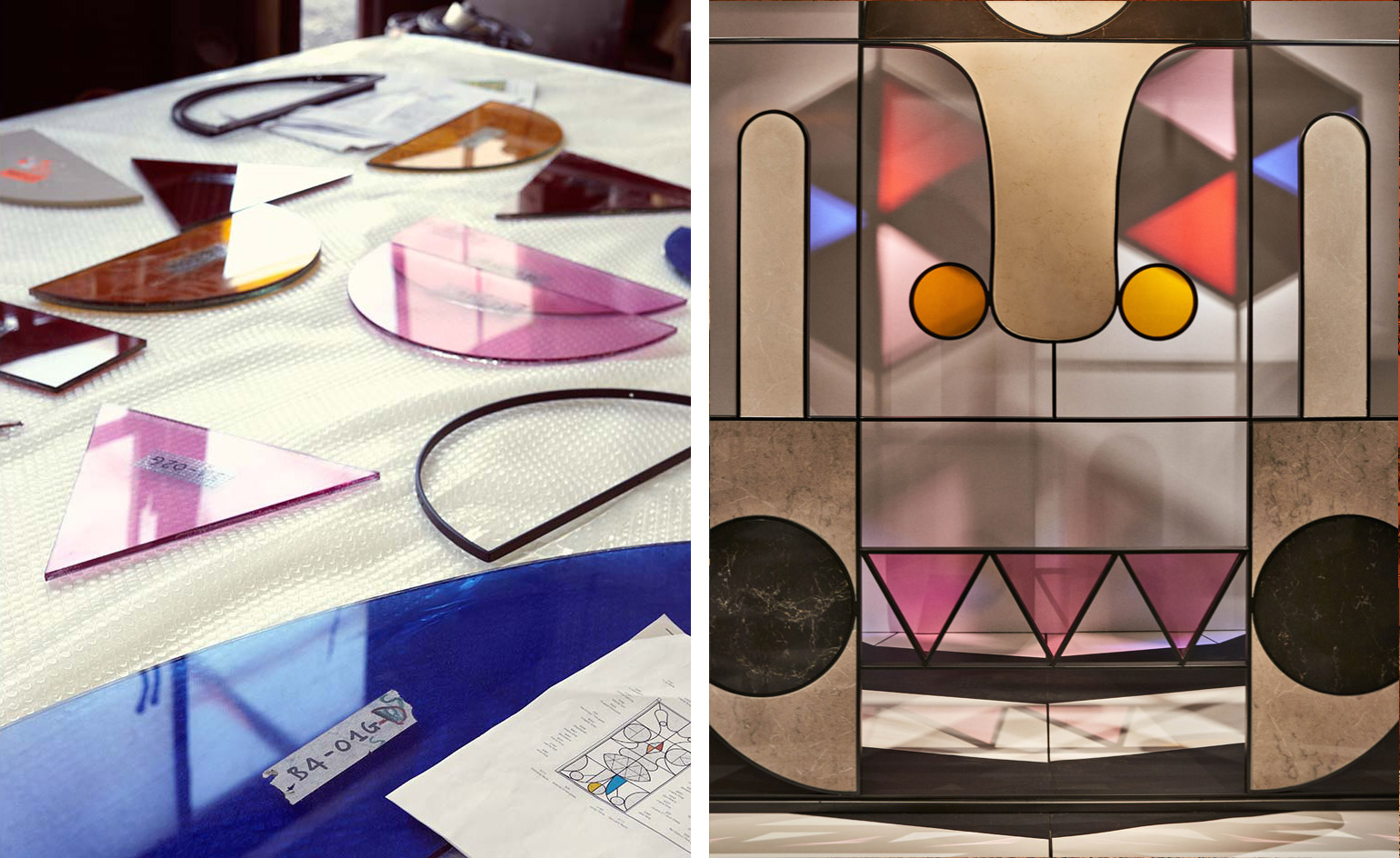
Left, elements of the folklore-inspired installation during assembly. Right, the stained glass creates a kaleidoscope-like effect.
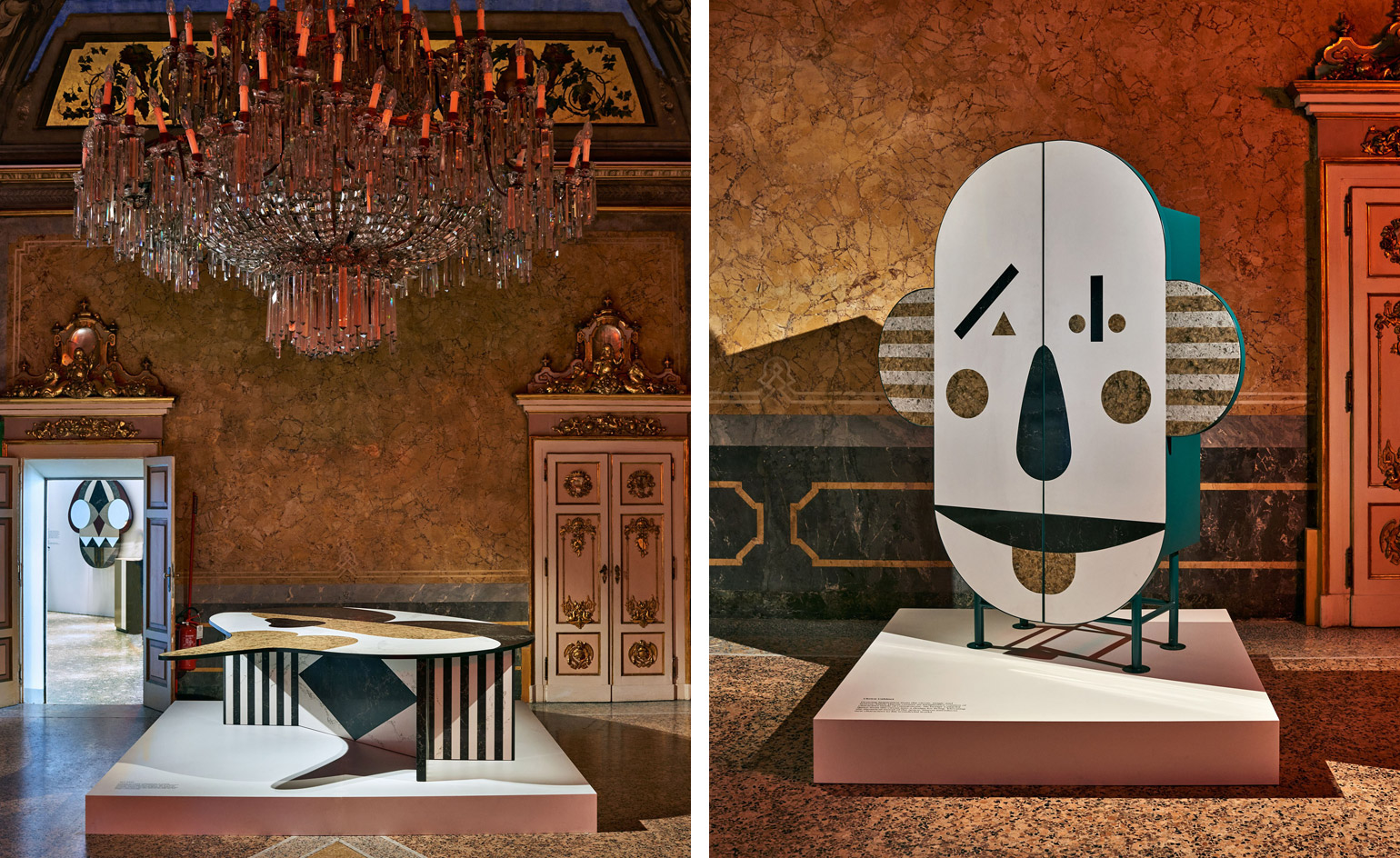
‘Bird Table’ (left) and ‘Clown Cabinet’
INFORMATION
‘Stone Age Folk’ ran from 4–8 April. For more information, visit Jamie Hayon’s website and the Caesarstone website
ADDRESS
Receive our daily digest of inspiration, escapism and design stories from around the world direct to your inbox.
Palazzo Serbelloni
Corso Venezia 16
Milan
Based in London, Ellen Himelfarb travels widely for her reports on architecture and design. Her words appear in The Times, The Telegraph, The World of Interiors, and The Globe and Mail in her native Canada. She has worked with Wallpaper* since 2006.
-
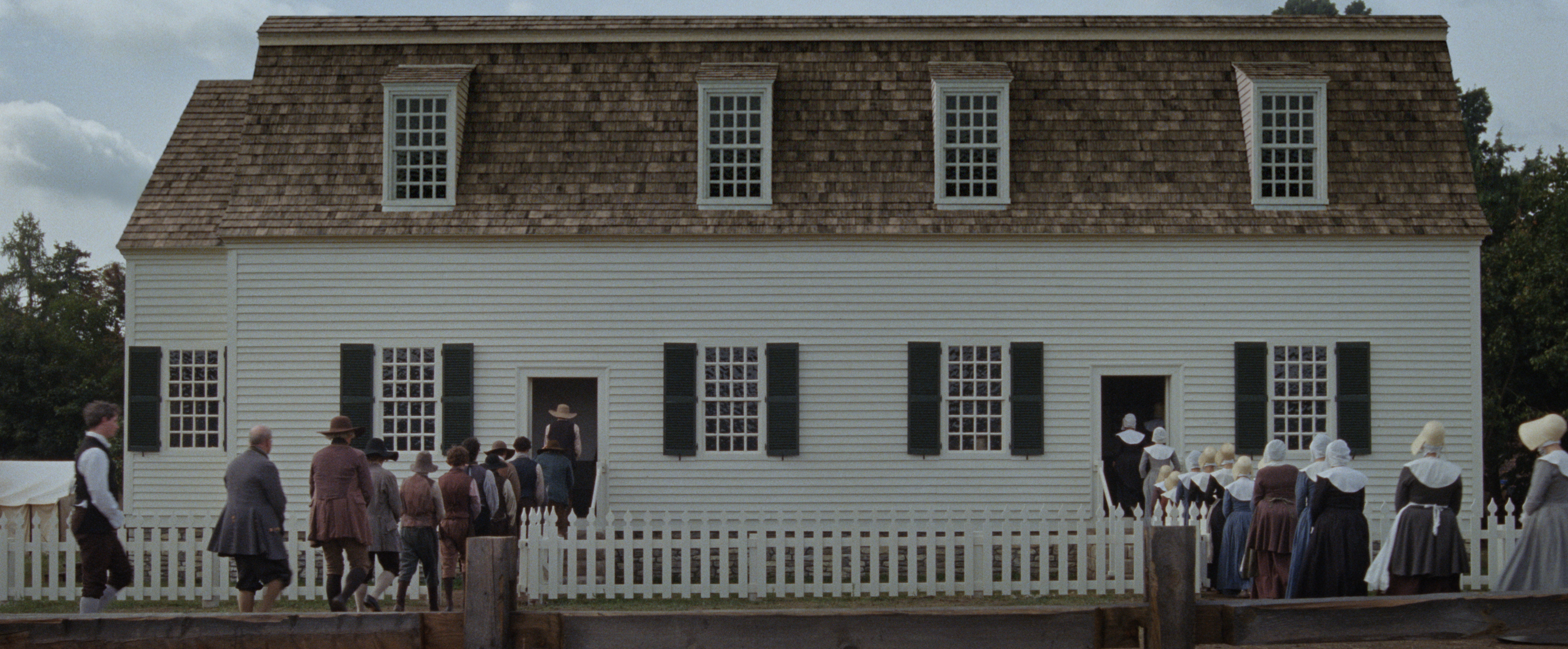 The Testament of Ann Lee brings the Shaker aesthetic to the big screen
The Testament of Ann Lee brings the Shaker aesthetic to the big screenDirected by Mona Fastvold and featuring Amanda Seyfried, The Testament of Ann Lee is a visual deep dive into Shaker culture
-
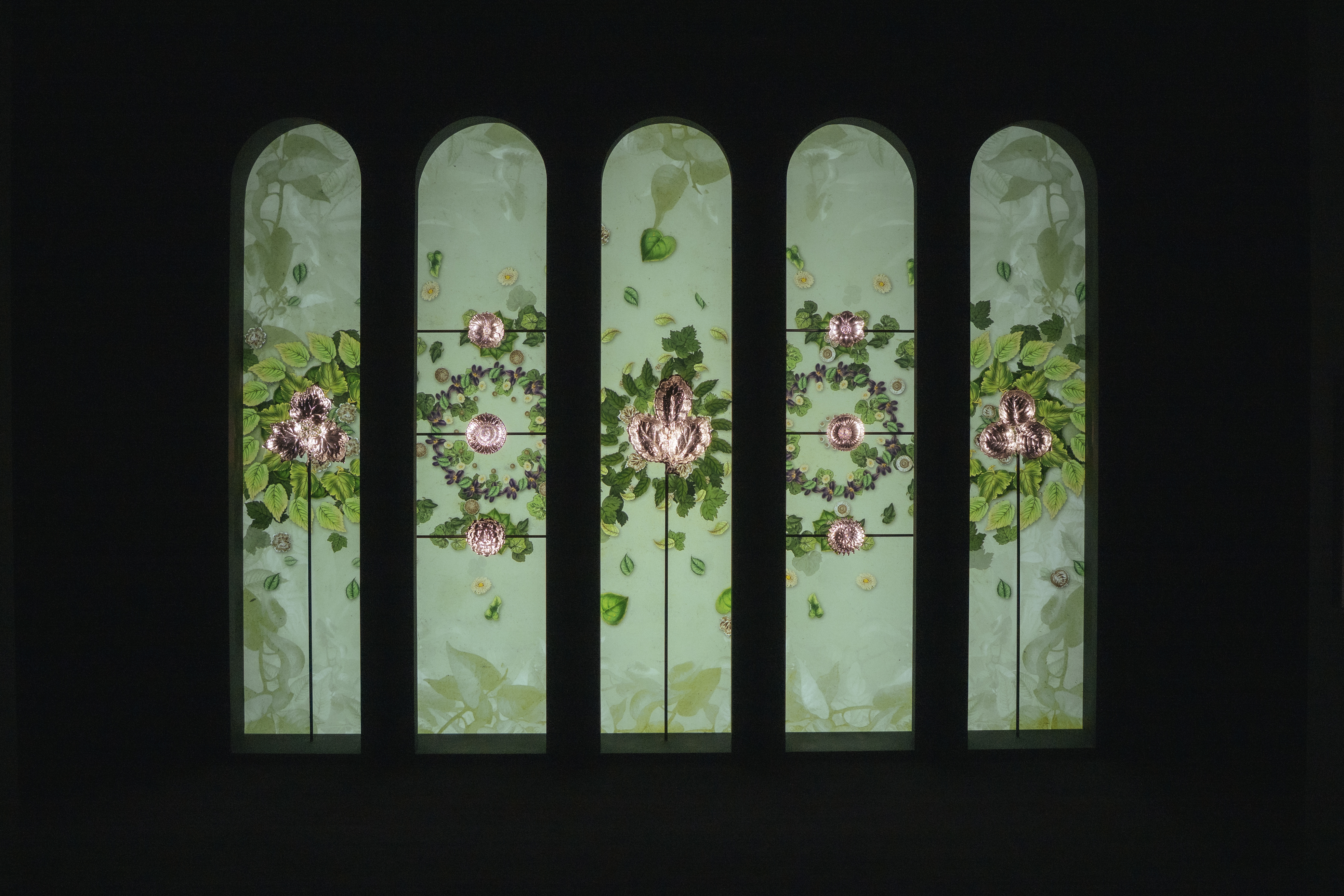 Dive into Buccellati's rich artistic heritage in Shanghai
Dive into Buccellati's rich artistic heritage in Shanghai'The Prince of Goldsmiths: Buccellati Rediscovering the Classics' exhibition takes visitors on an immersive journey through a fascinating history
-
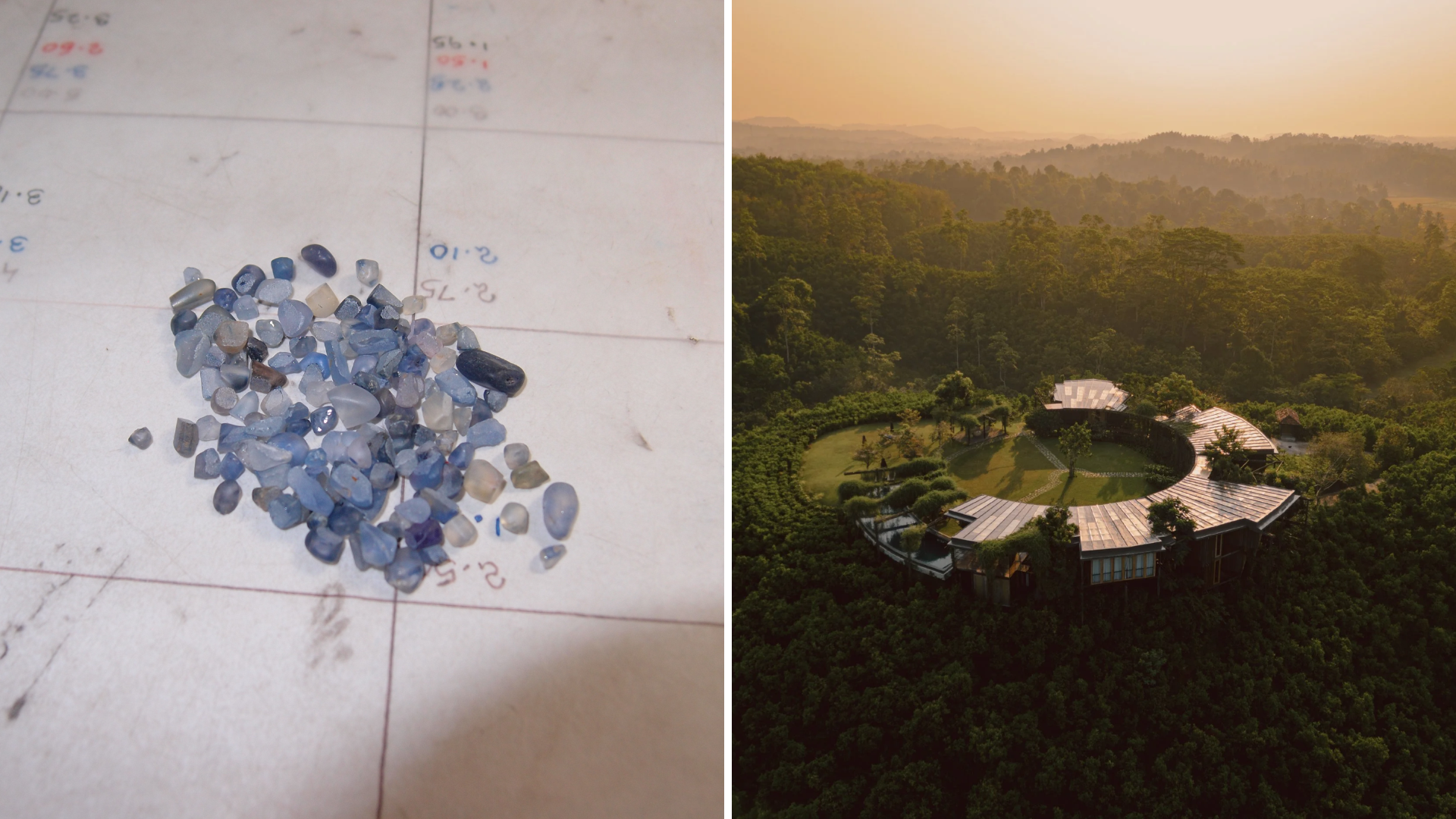 Love jewellery? Now you can book a holiday to source rare gemstones
Love jewellery? Now you can book a holiday to source rare gemstonesHardy & Diamond, Gemstone Journeys debuts in Sri Lanka in April 2026, granting travellers access to the island’s artisanal gemstone mines, as well as the opportunity to source their perfect stone
-
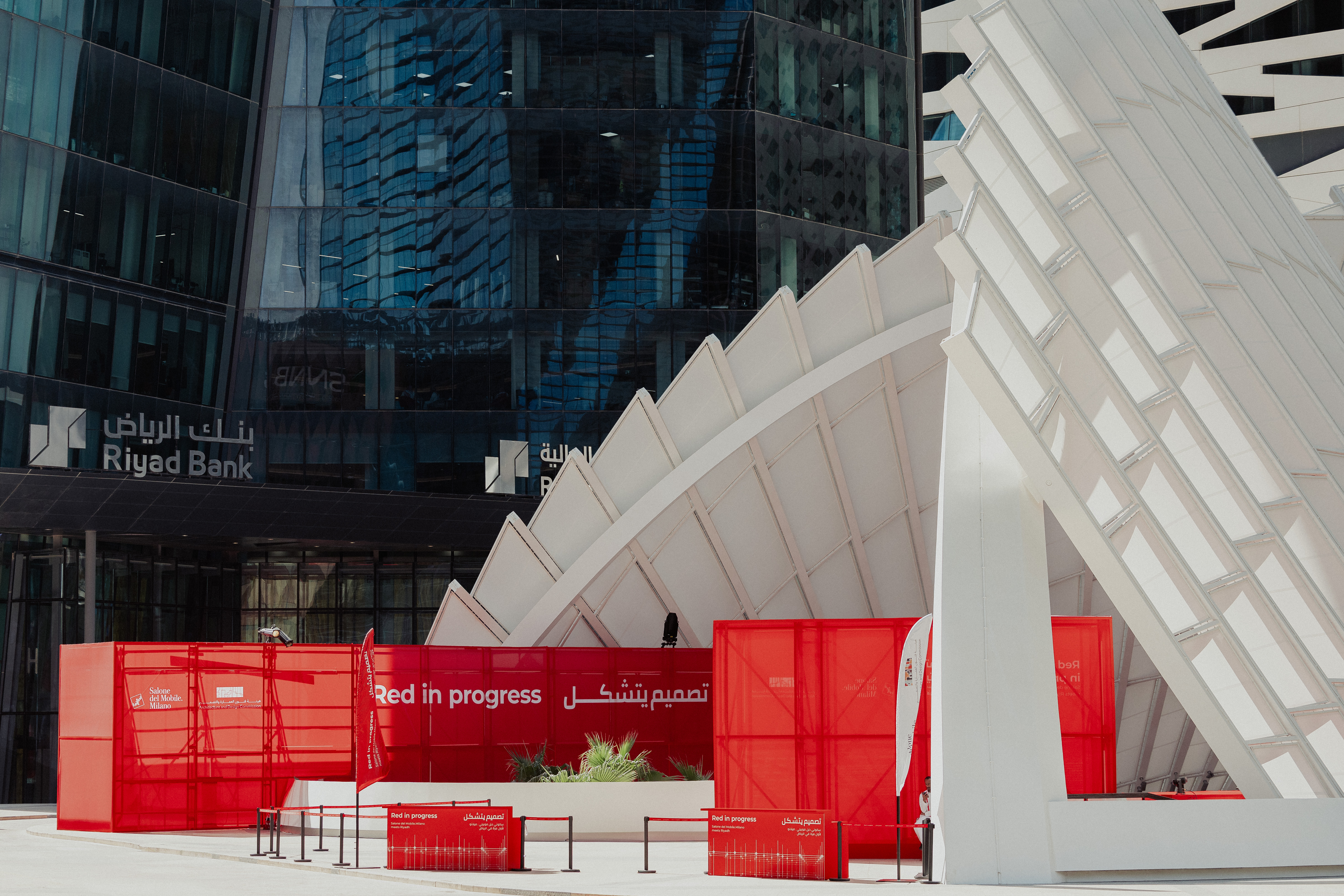 ‘Locally anchored and globally conversant’: Salone del Mobile debuts in Saudi Arabia
‘Locally anchored and globally conversant’: Salone del Mobile debuts in Saudi ArabiaSalone del Mobile lands in Riyadh (26-28 November 2025), bringing its creative and manufacturing know-how to one of the world’s fastest-growing markets and setting the stage for Italo-Saudi design relations
-
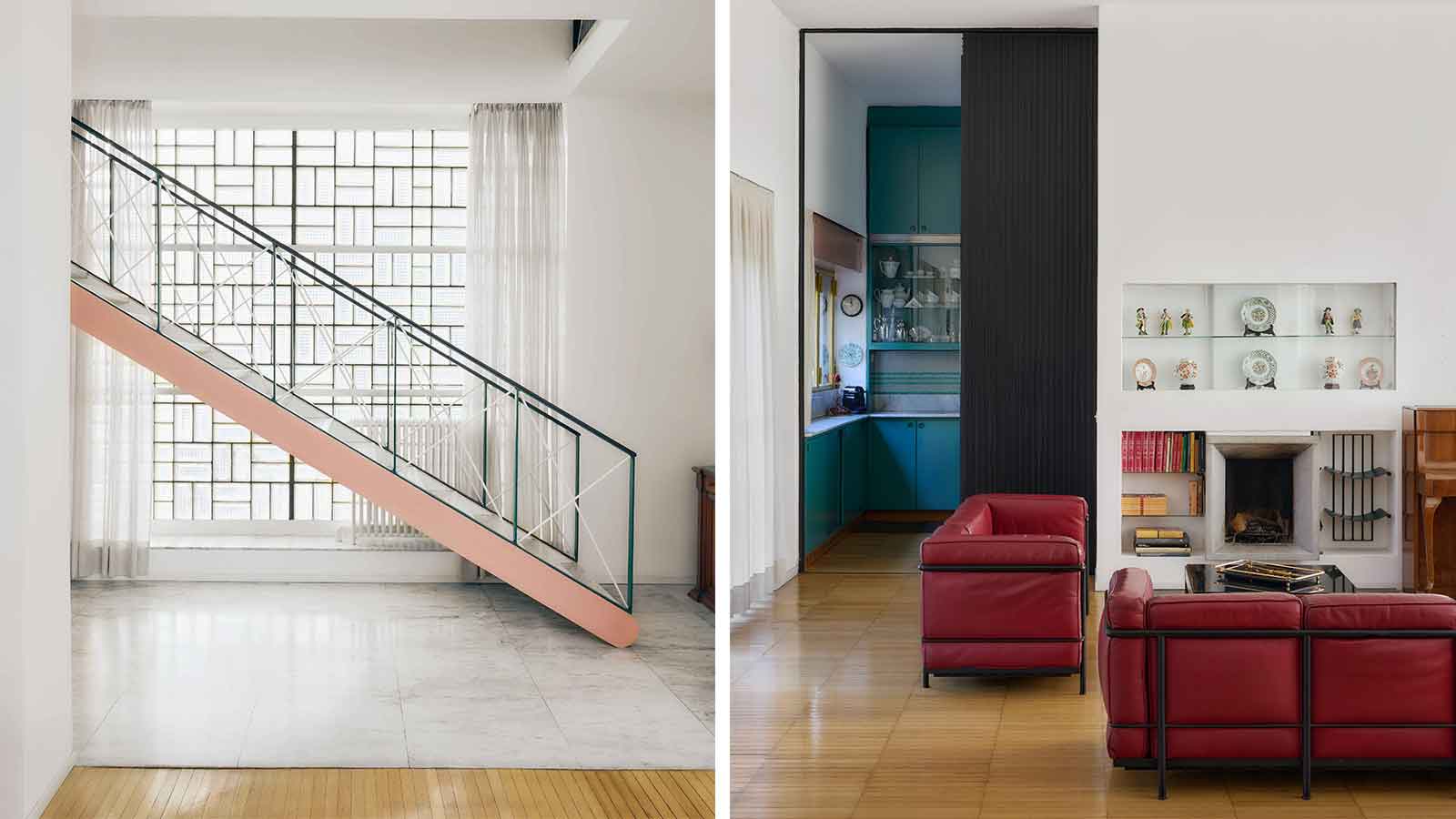 Alcova 2026 locations include a Rationalist gem and an abandoned church
Alcova 2026 locations include a Rationalist gem and an abandoned churchAlcova returns for an 11th edition in 2026 (20-26 April), once again opening up two exclusive Milanese locations, the Baggio Military Hospital and Franco Albini's Villa Pestarini
-
 Salone del Mobile 2026 will embrace collectible design with Salone Raritas
Salone del Mobile 2026 will embrace collectible design with Salone RaritasSalone del Mobile has Salone Raritas, a new exhibition space at the fair (21-26 April 2026), curated by Annalisa Rosso and designed by Formafantasma
-
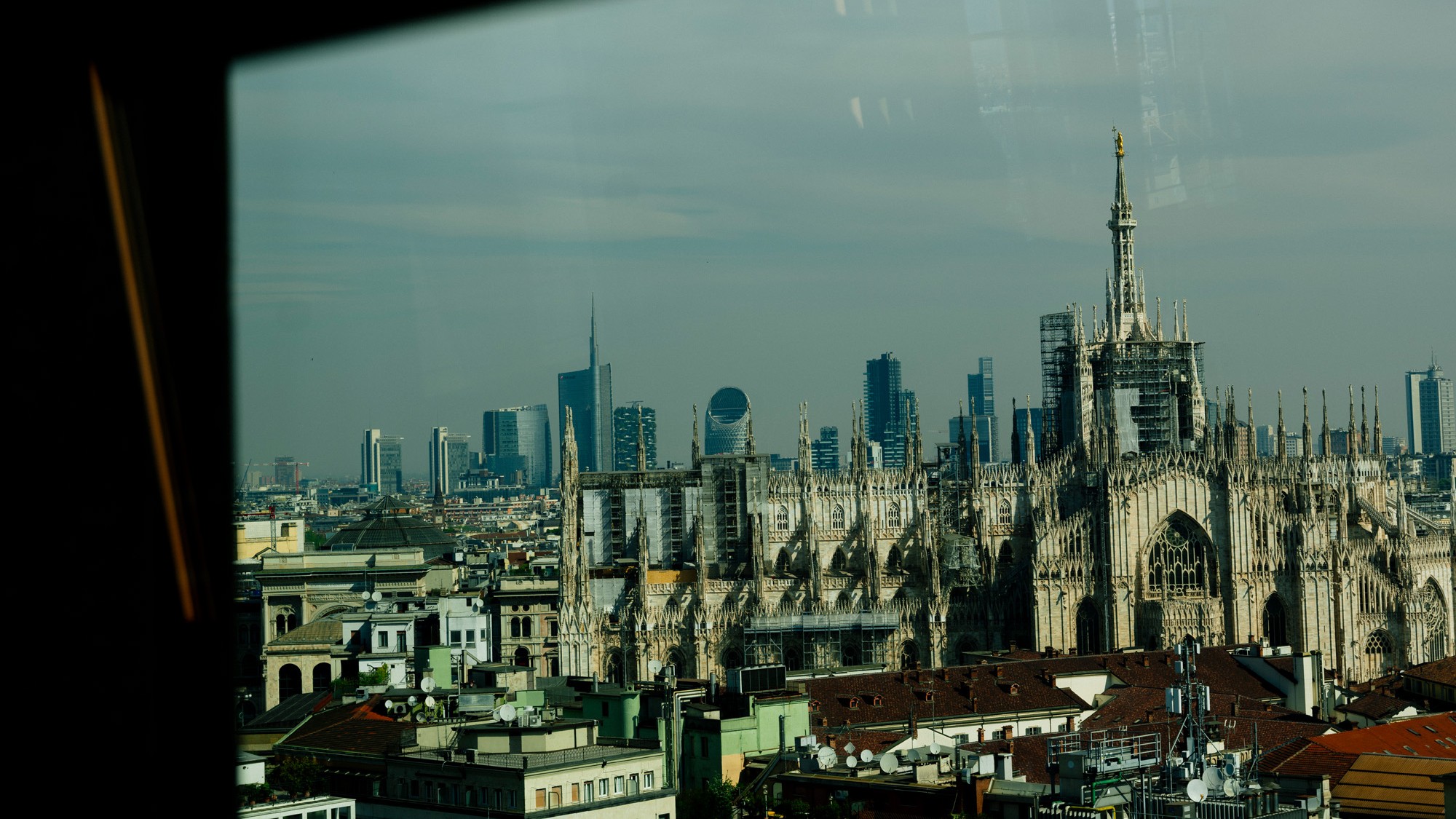 O Milano! Design's epic annual spectacle in photos
O Milano! Design's epic annual spectacle in photosCall us biased, but we believe that Milan Design Week is, at this moment in time, the greatest show on earth
-
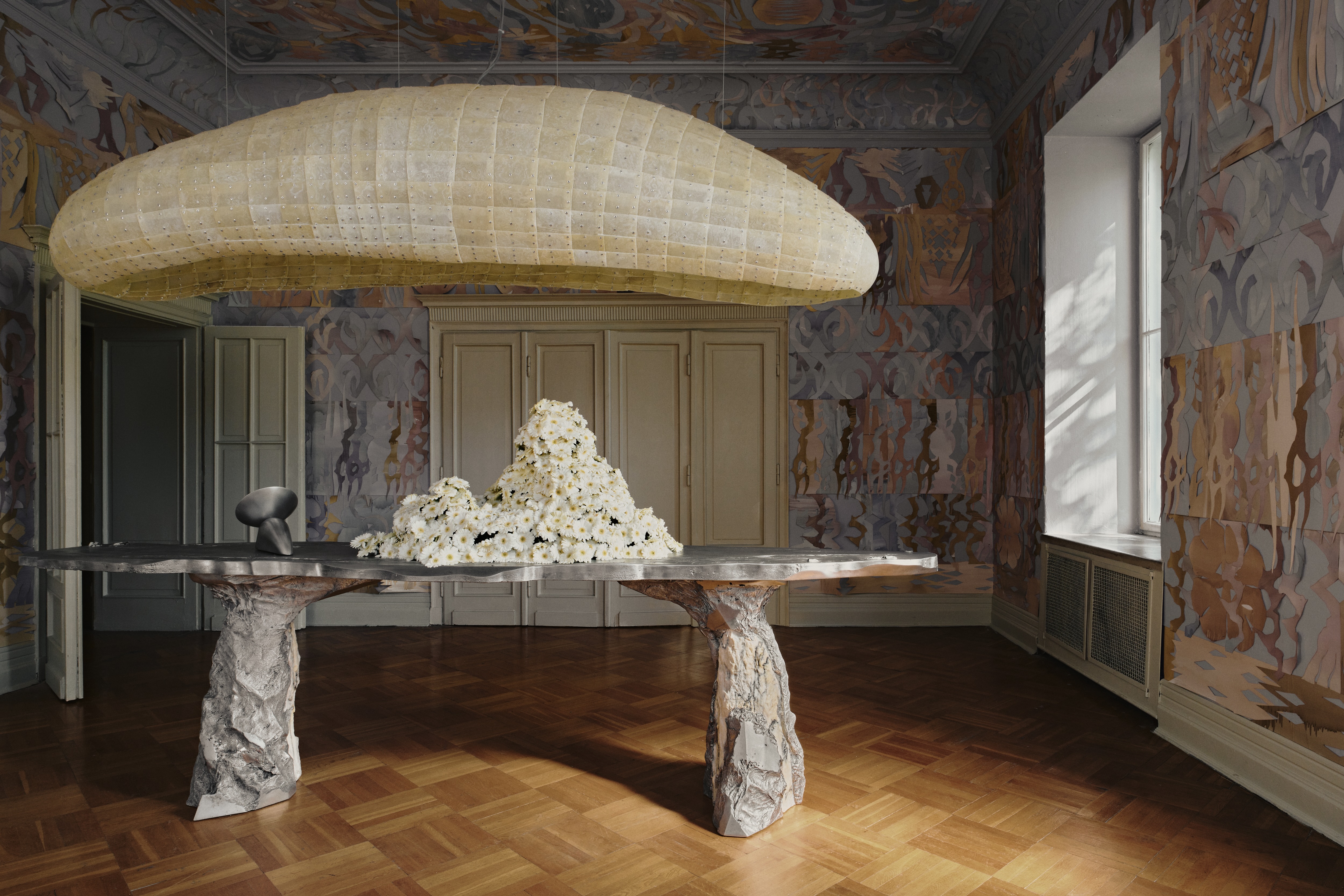 ‘Romantic brutalism’ rethinks Polish craft
‘Romantic brutalism’ rethinks Polish craftAn exhibition in Warsaw gives local makers their due, looking inside the burgeoning world of Polish design
-
 Eight designers to know from Rossana Orlandi Gallery’s Milan Design Week 2025 exhibition
Eight designers to know from Rossana Orlandi Gallery’s Milan Design Week 2025 exhibitionWallpaper’s highlights from the mega-exhibition at Rossana Orlandi Gallery include some of the most compelling names in design today
-
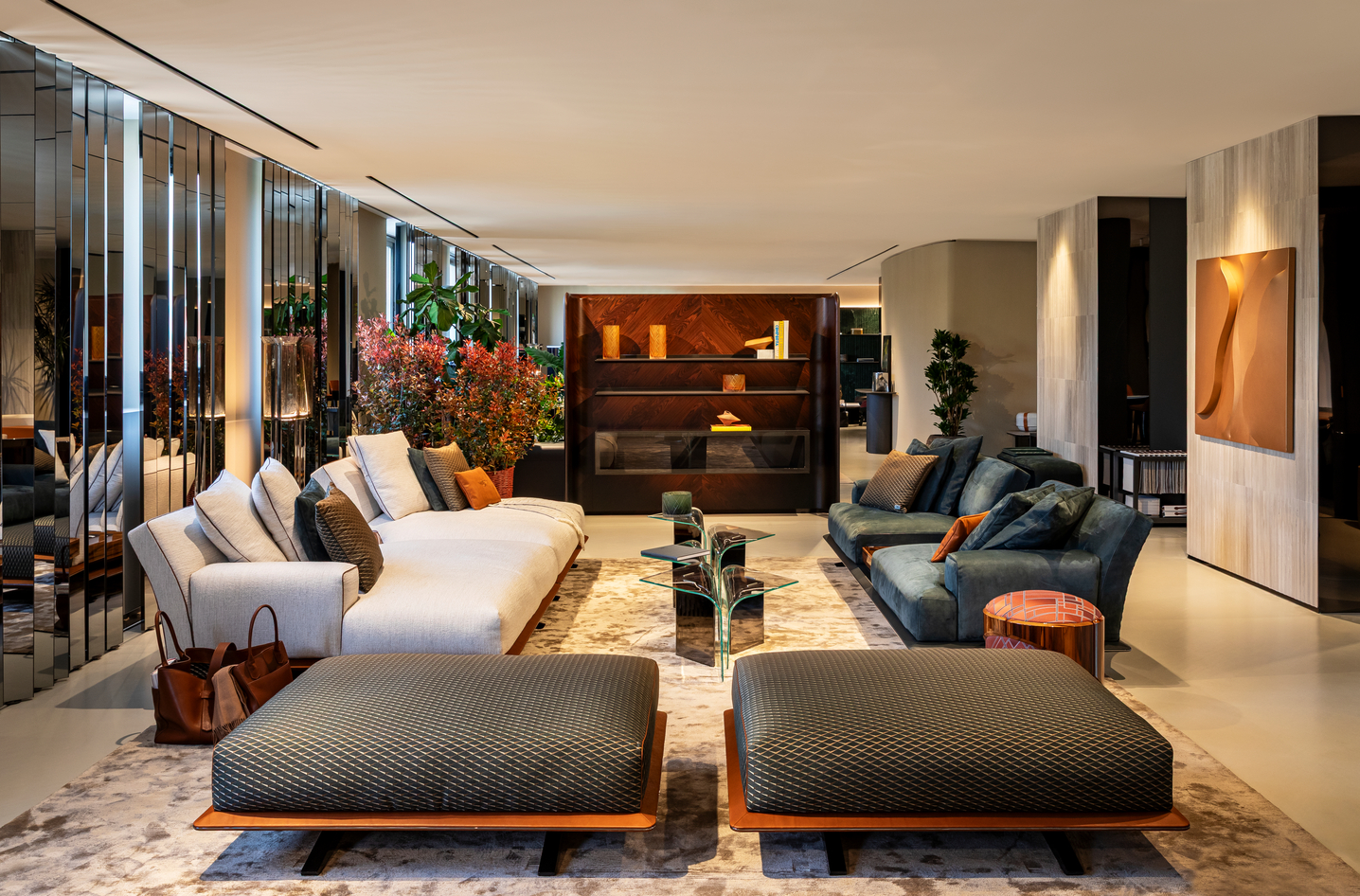 Bentley’s new home collections bring the ‘potency’ of its cars to Milan Design Week
Bentley’s new home collections bring the ‘potency’ of its cars to Milan Design WeekNew furniture, accessories and picnic pieces from Bentley Home take cues from the bold lines and smooth curves of Bentley Motors
-
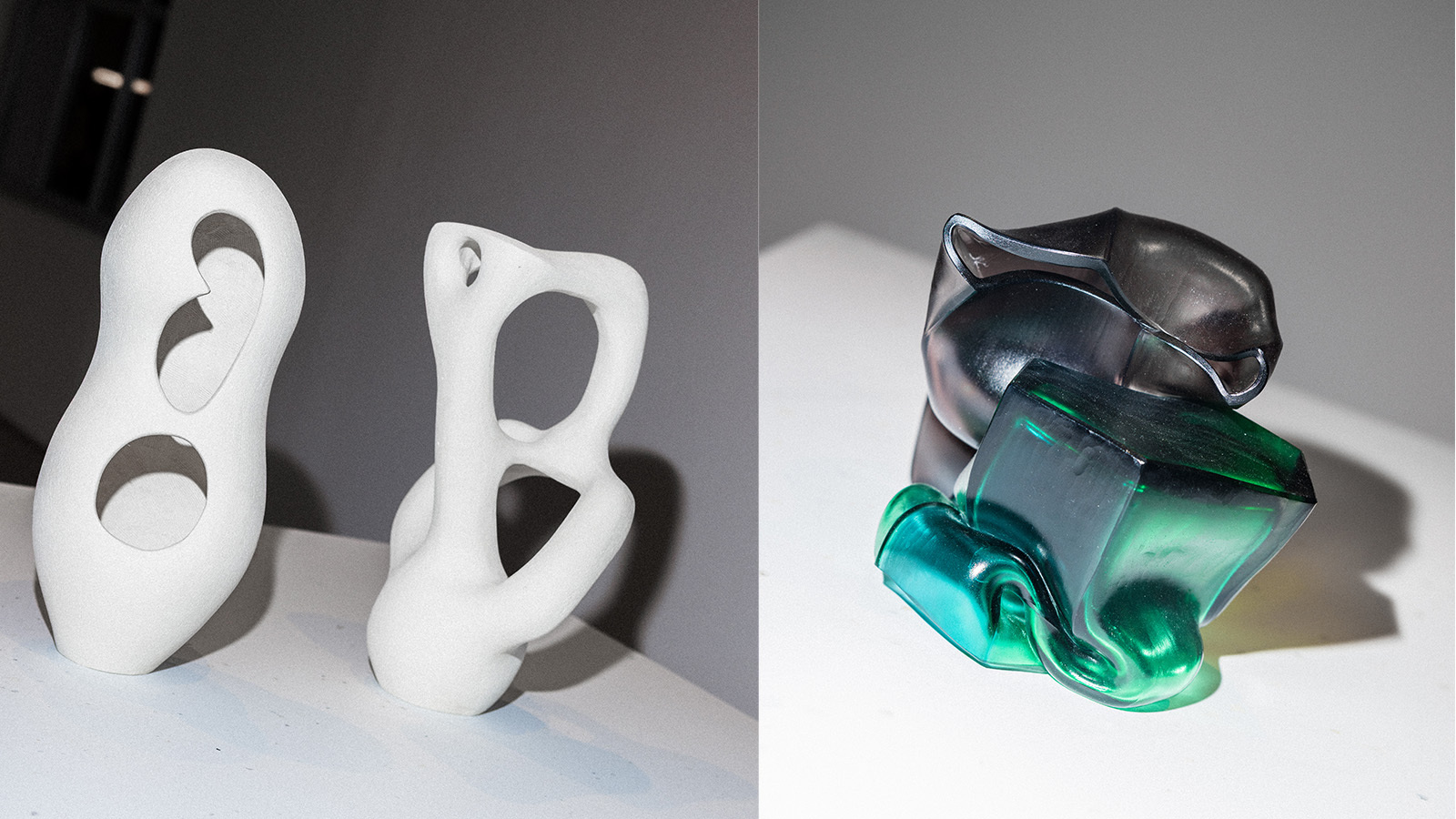 StoneX partners with Wallpaper* for material alchemy at Milan Design Week and beyond
StoneX partners with Wallpaper* for material alchemy at Milan Design Week and beyondThe natural stone purveyor teams up with Wallpaper* for a three-year partnership of material adventures, starting with an exhibition at Triennale di Milano